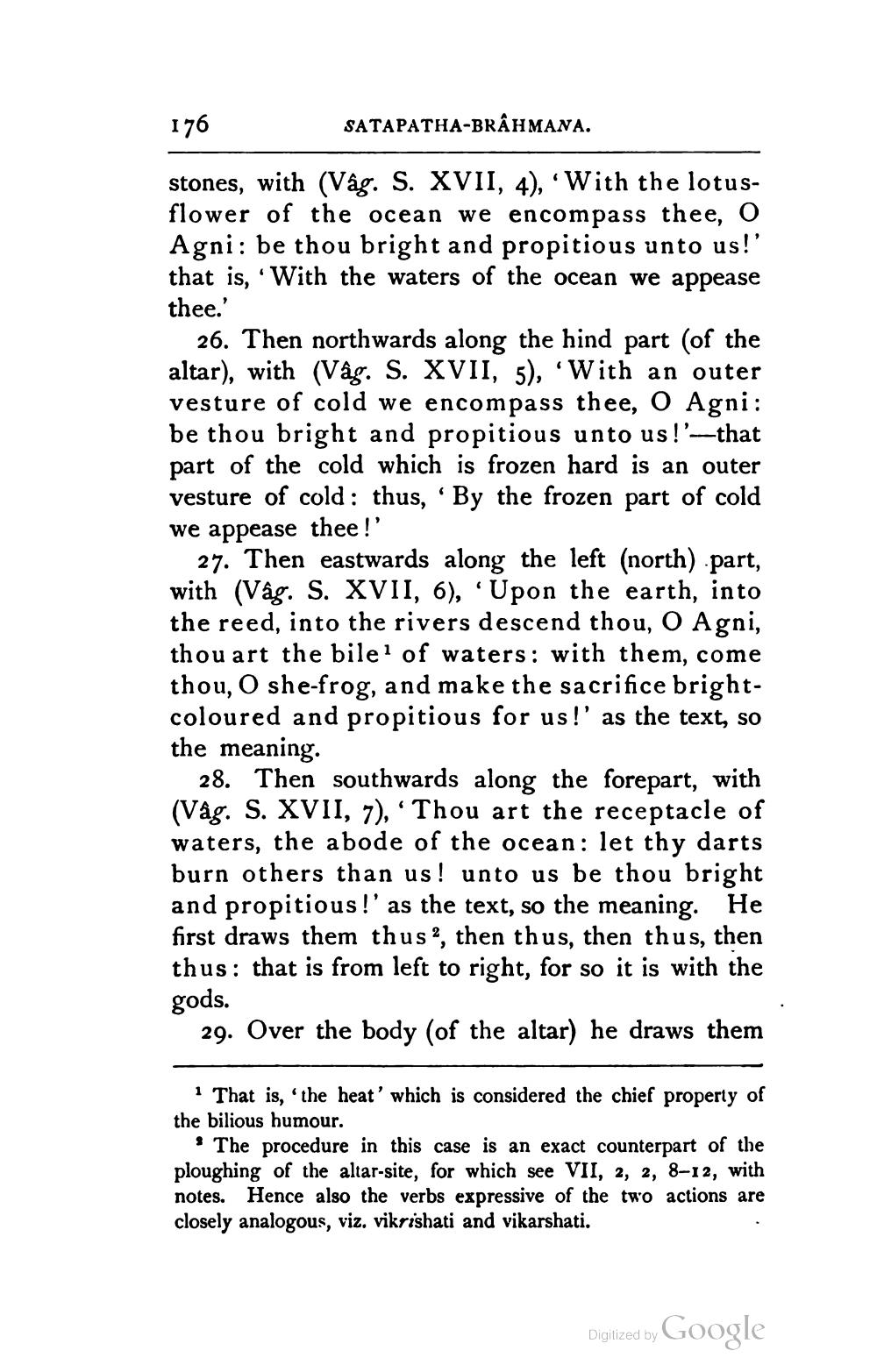________________
176
SATAPATHA-BRAHMANA.
stones, with (Vâg. S. XVII, 4), With the lotusflower of the ocean we encompass thee, O Agni: be thou bright and propitious unto us!' that is, 'With the waters of the ocean we appease thee.'
26. Then northwards along the hind part (of the altar), with (Vâg. S. XVII, 5), With an outer vesture of cold we encompass thee, O Agni: be thou bright and propitious unto us!'-that part of the cold which is frozen hard is an outer vesture of cold: thus, 'By the frozen part of cold we appease thee!
27. Then eastwards along the left (north) part, with (Vag. S. XVII, 6), “Upon the earth, into the reed, into the rivers descend thou, O Agni, thou art the biler of waters: with them, come thou, O she-frog, and make the sacrifice brightcoloured and propitious for us!' as the text, so the meaning.
28. Then southwards along the forepart, with (Våg. S. XVII, 7), 'Thou art the receptacle of waters, the abode of the ocean: let thy darts burn others than us! unto us be thou bright and propitious!' as the text, so the meaning. He first draws them thus, then thus, then thus, then thus: that is from left to right, for so it is with the gods.
29. Over the body (of the altar) he draws them
1 That is, the heat' which is considered the chief property of the bilious humour.
9 The procedure in this case is an exact counterpart of the ploughing of the altar-site, for which see VII, 2, 2, 8-12, with notes. Hence also the verbs expressive of the two actions are closely analogous, viz. vikrishati and vikarshati.
Digitized by Google




